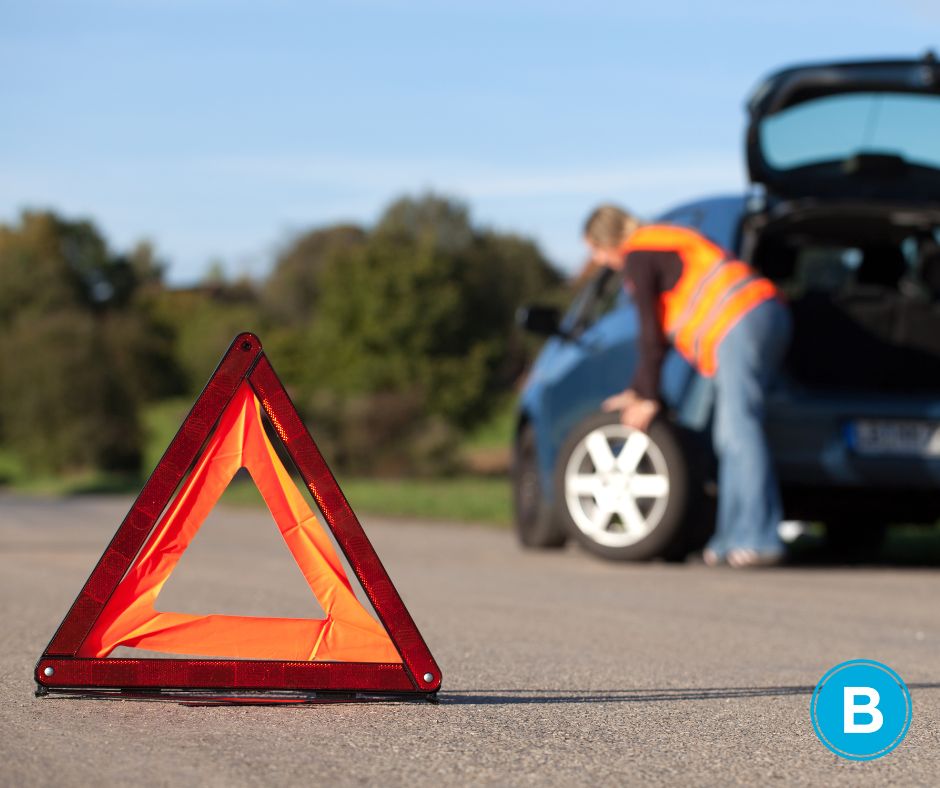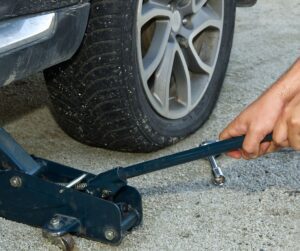
Do you know the risk of changing a flat tire?
We’ve all been there:
You’re driving along and suddenly, you feel like something is “off” with your car. A pull, difficulty steering, and in some cars, an alert light on your dashboard panel lets you know you have a flat tire.
Now what?
Changing a flat tire on the side of the road can be deadly, as the families of two Florida victims found out. The men were simply changing a flat tire on the side of a Florida highway when a driver (asleep at the wheel) swerved off the road and hit them, killing one instantly and fatally injuring the other. Hearing the details of this case reminded us of the risk of changing a flat tire. Many drivers are unaware of the dangers, and we believe awareness is key to saving lives.
In addition to knowing how to safely change it, prevention is the best way to protect yourself from the risk of changing a flat tire.
How do you prevent a flat tire?
While there is no way to 100% guarantee you won’t experience a flat tire, there are things you can do to lower your chances. Flat tires are frequently caused by:
Lack of Maintenance
Failing to keep up with maintenance is a leading cause of flat tires. This includes:
- routine inspections
- tire balancing
- tire rotation
- replacing tires when treads begin to show wear
Keeping your tires in good condition with regular maintenance is the best way to protect yourself from experiencing the risks of changing a flat tire.
Debris
If you’re in areas that have a heavy amount of debris on the road, you’re likely to experience damage to your tires. High-risk areas include construction sites, homes that have recently had a roof repaired/replaced, and agricultural or industrial zones. Nails, screws, metal shards, etc. can puncture your tire and lead to a blowout or a slow leak.
Poor Road Conditions
Rough road conditions (like extensive potholes or uneven pavement) can wear out your tires more quickly and lead to a breakdown in their integrity.
Skill Behind the Wheel
Careful driving is an important part of protecting your tires. Hitting curbs, running over barriers, or even going over speedbumps too quickly can damage your tires.
Preventing them all together is the first step in protecting yourself from the risk of changing a flat tire.
How do you safely change a flat tire?
So, the inevitable has happened and now you have to change a flat tire. How can you do it safely?
Call for help if possible.
Many auto insurance policies provide roadside assistance options. If you’re part of AAA, you also have roadside assistance at your disposal. These services will come to you, sending a team to quickly and safely change your tire. They have the equipment needed to protect themselves, and you, during the tire change process.
Have the proper equipment on hand.
If you do have to change your own tire, having the proper equipment in your vehicle is a must. Stock your trunk with:
- a brand-new spare tire
- a jack
- a lug wrench
- your vehicle owner’s manual
- a pair of heavy work gloves
- flares
- a reflective vest
- a headlamp and batteries
These pieces of gear not only help you change the tire but help you do it safely by making you as visible as possible to oncoming traffic.

A sturdy tire jack should be part of any vehicle’s emergency kit!
Know the steps.
First and foremost, move your vehicle as far off the roadway as possible. Your car needs to be on a flat, mostly level surface for you to safely change your tire.
To change your own tire:
- gather your tools
- loosen lug nuts with your wrench (don’t remove them completely yet!)
- position your jack according to your car’s owner’s manual
- lift the vehicle approximately 6 inches off the ground (keep all body parts clear)
- fully remove the lug nuts and take off the flat tire
- align the spare tire with wheel bolts and push securely into place on the hub
- hand-tighten all lug nuts
- lower vehicle until the spare tire just touches the ground
- tighten lug nuts fully with your wrench
- lower vehicle the rest of the way and double-check lug nut tightness
Remember, a spare tire is not meant to be used at high speeds or for long distances. Get your car to an auto repair or tire shop ASAP for a full tire replacement.
What happens if I’m injured while changing a flat tire?
The risk of changing a flat tire is high, with many victims being injured or killed by oncoming traffic. If you’re hit while changing your tire alongside a Tampa road, the team at Brooks Law Group is here for you. Call us first if you or a loved one have experienced a death or injury during a roadside tire change. We stand on personal care for our clients and a strong presence that advocates for you in court and around the table. Getting the justice you deserve and the compensation you need are our top priorities. We offer free consultations for all victims, and you don’t pay unless we win. Call our team to discuss your case!













